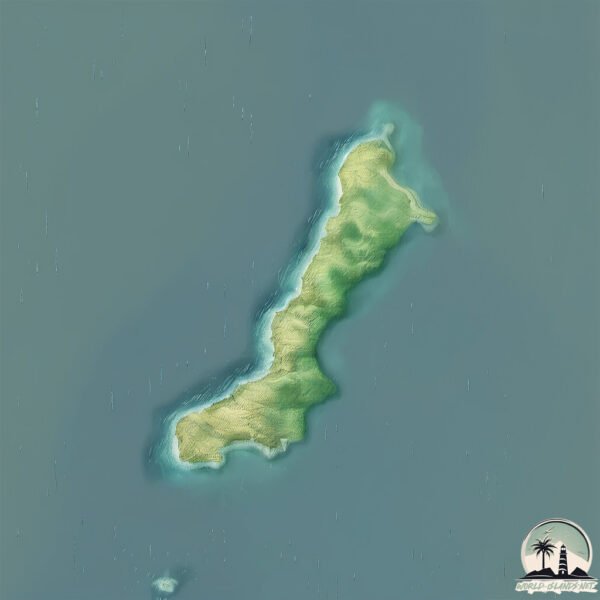Prime Seal

Welcome to Prime Seal, a Temperate island in the Bass Strait, part of the majestic Pacific Ocean. This guide offers a comprehensive overview of what makes Prime Seal unique – from its geography and climate to its population, infrastructure, and beyond. Dive into the details:
- Geography and Size: Explore the island’s size and location.
- Climate and Weather: Weather patterns and temperature.
- Topography and Nature: Uncover the natural wonders of the island.
- Infrastructure and Travelling: Insights on reaching, staying, and making the most of your visit.
- News and Headlines: Latest News.
Geography and size of Prime Seal
Size: 13.2 km²
Coastline: 38.3 km
Ocean: Pacific Ocean
Sea: Bass Strait
Continent: Oceania
Prime Seal is a Medium Island spanning 13 km² with a coastline of 38 km.
Archipel: –
Tectonic Plate: Australia – A major tectonic plate covering Australia, New Zealand, and parts of the Indian and Pacific Oceans, known for its relative stability and occasional seismic activity.
The geographic heart of the island is pinpointed at these coordinates:
Latitude: -40.06637743 / Longitude: 147.75645529
Climate and weather of Prime Seal
Climate Zone: Temperate
Climate Details: Temperate Oceanic Climate
Temperature: Warm Summer
Climate Characteristics: Known for its moderate year-round temperatures with ample rainfall and no dry season. Warm summers are characteristic.
Topography and nature of Prime Seal
Timezone: UTC+10:00
Timezone places: Australia/Sydney
Max. Elevation: 115 m
Mean Elevation: 50 m
Vegetation: Sparse Vegetation with Trees/Shrubs
Tree Coverage: 61%
The mean elevation is 50 m. The highest elevation on the island reaches approximately 115 meters above sea level. The island is characterized by Plains: Flat, low-lying lands characterized by a maximum elevation of up to 200 meters. On islands, plains are typically coastal lowlands or central flat areas.
Dominating Vegetation: Sparse Vegetation with Trees/Shrubs
Areas where grasses and other herbaceous plants are prevalent, but with occasional presence of trees and shrubs. Often found in semi-arid regions or grasslands. Prime Seal has a tree cover of 61 %.
Vegetation: 6 vegetation zones – Very Highly Diverse Island
Islands in this range are ecological powerhouses, showcasing a wide array of vegetation zones. Each zone, from lush rainforests to arid scrublands, coastal mangroves to mountainous regions, contributes to a complex and interdependent ecosystem. These islands are often hotspots of biodiversity, supporting numerous species and intricate ecological processes.
Infrastructure and Travelling to Prime Seal
Does the island have a public airport? no.
There is no public and scheduled airport on Prime Seal. The nearest airport is Flinders Island Airport, located 23 km away.
Does the island have a major port? no.
There are no major ports on Prime Seal. The closest major port is PORT DALRYMPLE, approximately 151 km away.
The mean population of Prime Seal is 0 per km². Prime Seal is Uninhabited. The island belongs to Australia.
Continuing your journey, Badger is the next notable island, situated merely km away.
Prime Seal Island 2024. Sheeps beat us. 10 to 90



Australia is classified as Developed region: nonG7: Developed economies outside of the Group of Seven, characterized by high income and advanced economic structures. The level of income is High income: OECD.
News – Latest Updates and Headlines from Prime Seal
Stay informed with the most recent news and important headlines from Prime Seal. Here’s a roundup of the latest developments.
- Thailand, Singapore to seal five-year rice trade deal during Anutin’s visit - Thai PBS Worldon 7 November 2025
Thailand, Singapore to seal five-year rice trade deal during Anutin’s visit Thai PBS World
- VIDEO: Surfer bitten by shark chasing seal off Kangaroo Island - Australian Broadcasting Corporationon 8 October 2025
VIDEO: Surfer bitten by shark chasing seal off Kangaroo Island Australian Broadcasting Corporation
- Protecting Puffins in Maine Is an Emotional Commitment - The Equation - Union of Concerned Scientistson 1 October 2025
Protecting Puffins in Maine Is an Emotional Commitment The Equation - Union of Concerned Scientists
- Anthony Albanese fails to seal defence treaty between Australia and PNG - The Guardianon 17 September 2025
Anthony Albanese fails to seal defence treaty between Australia and PNG The Guardian
- Prime Group and FSLGA seal public-private synergy to elevate Local Government capacity nationwide - Daily FTon 21 June 2025
Prime Group and FSLGA seal public-private synergy to elevate Local Government capacity nationwide Daily FT
- Fantasy Life i: Every Purple Seal Location (& Rewards) - Game Ranton 26 May 2025
Fantasy Life i: Every Purple Seal Location (& Rewards) Game Rant
- Fantasy Life I: How To Lift Purple Seals - Game Ranton 22 May 2025
Fantasy Life I: How To Lift Purple Seals Game Rant
- UK signs Chagos deal with Mauritius, says China sought its ‘collapse’ - South China Morning Poston 22 May 2025
UK signs Chagos deal with Mauritius, says China sought its ‘collapse’ South China Morning Post
- UK signs Chagos deal with Mauritius to seal future of US-UK air base - Reuterson 22 May 2025
UK signs Chagos deal with Mauritius to seal future of US-UK air base Reuters
- The little-known UK beach with hidden cove and seals you can spot year-round - The Mirroron 27 April 2025
The little-known UK beach with hidden cove and seals you can spot year-round The Mirror
Please note: The data used here has been primarily extracted from satellite readings. Deviations from exact values may occur, particularly regarding the height of elevations and population density. Land area and coastline measurements refer to average values at mean high tide.
